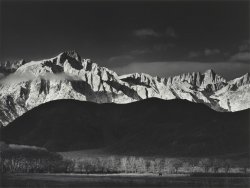- Joined
- Sep 25, 2017
- Messages
- 250
We once had a very good lunch in Paimpol.
Well, small world. Do you come over here from time to time?
It took a lot of walking to recover from the Calvados. The couple on the next table had a small dinghy filled with seafood.
Ah, the assiette de fruits de mer. I once ordered that when on an evening out with a friend. My co-diner however wasn't a seafood fan and ordered an omelette, followed by a long wait for me to finish
Do you never have some respected non-member along to discuss the work? You might be missing something. Once a year, perhaps? I'm not suggesting marks or the accursed thirds.
Did you mean 'their work'? If so, not yet, but we have a committee meeting tomorrow; perhaps I should suggest it.
We used to belong to Lancashire Monochrome before we moved. An excellent club that doesn't have judging sessions, simply sharing and discussion. They meet once a month and twice a year they also invite a "keynote speaker"to a special all day meeting with lunch; something that can be truly inspirational and something I miss here.


